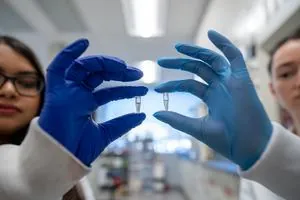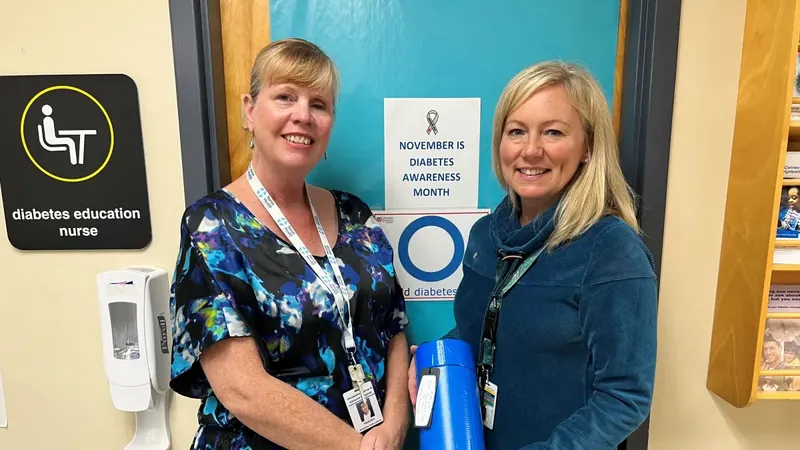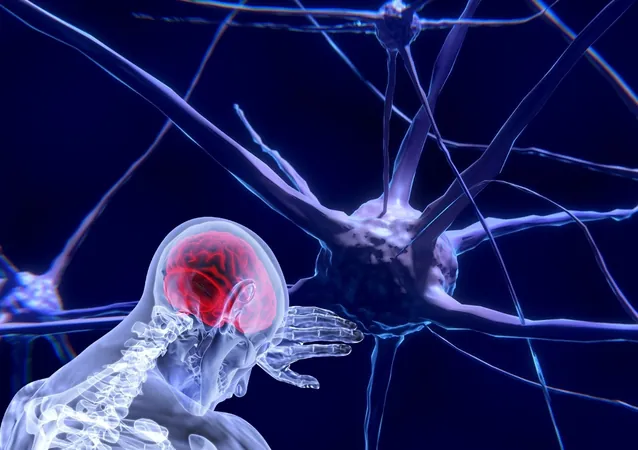
Revolutionary Lab-Free Test Detects Bacteria in Everything from Water to Urine – Here’s What You Need to Know!
2024-11-27
Author: Liam
Introduction
In a groundbreaking development, researchers at McMaster University have created a lab-free test that can detect harmful bacteria just by observing a simple color change. This innovative biogel test could pave the way for enhanced diagnostic capabilities and improved food safety, making it easier for anyone to check for potentially dangerous pathogens in liquids like lake water, milk, or even urine.
How the Test Works
The test utilizes harmless bacteriophages—viruses that specifically target bacteria—embedded within a biogel. This novel approach allows untrained users to confirm contamination presence easily, by simply looking for a color change in the sample. If the test detects disease-causing bacteria such as E. coli or listeria, the gel changes color; if not, it remains unchanged.
The Science Behind Bacteriophages
Bacteriophages, the most abundant organisms on Earth, are known for their specificity, targeting only certain types of bacteria. When bacteriophages encounter a target bacterium, they latch onto it and release cellular components that the biogel recognizes, leading to the visible color change signaling contamination.
Rapid Results and Applications
The rapidity of this test is particularly impressive, providing results within hours—compared to the two days often required for traditional lab cultures. The new technology is not only poised to revolutionize routine testing in clinical, food, and environmental settings but also offers a self-testing solution for individuals. 'Imagine being able to test yourself for urinary tract infections from the comfort of your home, with results in just hours,' adds Tohid Didar, the project’s co-author.
Previous Innovations
Previous innovations from this research team include a portable library for matching phages to antibiotic-resistant infections, contamination tests integrated directly into food packaging, and systems for storing live vaccines at stable temperatures. This latest advancement has already shown high accuracy, with trial results from Hamilton Health Sciences aligning perfectly with standard lab tests.
Adaptability of the Technology
Importantly, this technology is adaptable. It can target various pathogens simply by using different bacteriophages and DNA probes. This capability means that in instances like the recent listeria outbreak linked to plant-based milk— which tragically resulted in two deaths—a rapid test could have provided critical information to consumers about product safety.
Public Health Implications
'Our goal is to limit outbreak potential with fast and accurate detection tools,' says Akansha Prasad, emphasizing the potential public health benefits. The implications of this test could be substantial, especially for the 12% of Canadians lacking access to reliable piped water.
Commercialization Efforts
The researchers are actively seeking commercial partnerships to bring this revolutionary testing technology to market. 'With the right partnerships and approvals, this test could provide invaluable peace of mind to many, whether they are testing food at home or checking water quality,' concludes Hannah Mann, head author of the research article.
Conclusion
As test results could arrive in merely hours rather than days, this innovation not only represents a significant leap forward in science but also suggests a future where everyone can take charge of their health and safety—making contamination testing as easy as a quick glance. Don’t miss out on the latest updates surrounding this transformative technology!









 Brasil (PT)
Brasil (PT)
 Canada (EN)
Canada (EN)
 Chile (ES)
Chile (ES)
 España (ES)
España (ES)
 France (FR)
France (FR)
 Hong Kong (EN)
Hong Kong (EN)
 Italia (IT)
Italia (IT)
 日本 (JA)
日本 (JA)
 Magyarország (HU)
Magyarország (HU)
 Norge (NO)
Norge (NO)
 Polska (PL)
Polska (PL)
 Schweiz (DE)
Schweiz (DE)
 Singapore (EN)
Singapore (EN)
 Sverige (SV)
Sverige (SV)
 Suomi (FI)
Suomi (FI)
 Türkiye (TR)
Türkiye (TR)